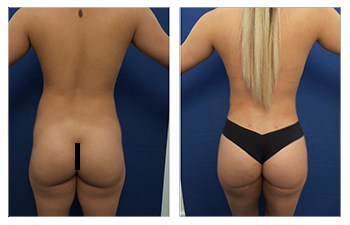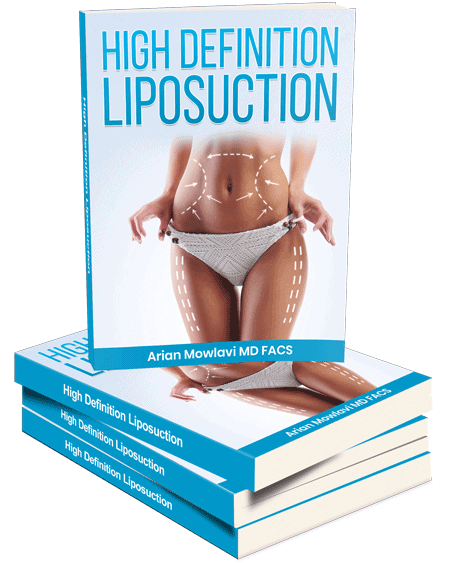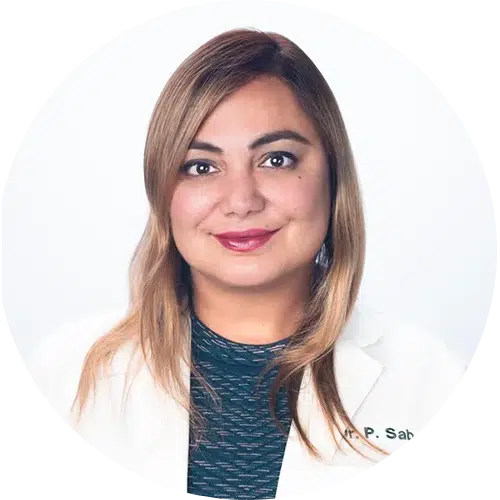



Download Our Surgical Team’s free Liposuction eBook
Brazilian butt lift revision before and after photographs are very helpful when trying to appreciate the improvements in buttock shape and size that are feasible. Patients should evaluate these photos with a keen eye and appreciate them aesthetically ideal. The first thing to look at is the overall harmony of the buttocks. Is there a soft transition between the legs and the buttocks and more importantly between the upper buttocks and the narrowed waistline? This transition is best described by the “Tilde” curve.
What is skin quality like? Does the butt look wrinkly or is there cellulite present on the legs? Does the buttock look droopy or too long in relation to the height of the back? These suboptimal results should not be present and necessitate a lateral thigh and buttock tuck. BBL revision before and after photos should demonstrate smooth contour lines with buttock and leg skin that is smooth in appearance.
Do Brazilian butt lift revision before and after photos demonstrate a large differential between waist and buttock widths? One of the main reasons that I do BBL revisions is because the volume that was placed into the butt initially has disappeared.
On the internet, it is common to read patient feedback that only 60% of their butt volume was retained at 6 months. Although this is a genuine observation for many BBL results, it should not be so. The reason nearly half of the butt volume is gone at six months is multifactorial.
First, it is possible that the provider did not use ultrasound-assisted liposuction. Only ultrasound-assisted liposuction protects the fat cells from being injured during the harvest process.
Traditional liposuction techniques require ripping out of the fat cells which results in nicks to the outer fat cell shell. Cells that are injured during the harvest process and then placed into the buttocks will be removed by your body!
Other reasons for fat loss are related to technical errors including unnecessary higher negative pressures used during the sucking process or unnecessary positive pressures used during the injection. If the fat cells are not properly washed to remove pro-inflammatory products and cells then this can result in loss of fat cell viability.
A final cause of fat cell injury involves the false pretense that thinner patients must gain weight for their BBL. When we gain weight, the fat cells get larger in size not more in number.
Unfortunately, a larger fat cell has less likelihood of making it through the small holes in the tip of the cannula used to remove the fat than smaller fat cells. As such, it is critical to avoid gaining weight for your BBL no matter how thin you are.
Using ultrasound-assisted liposuction, 40% more fat can be harvested than with traditional techniques. This makes it unnecessary for patients to worry about having enough fat to get the BBL results they are desiring.
Schedule a Meeting for your BBL Revision
A consultation with Our Surgical Team will help you realize what BBL revision results you can achieve. Even if you feel that you are too thin to get a great result, a consultation with Our Surgical Team will allow for an assessment of how much fat will be available for your BBL revision.
This means no gaining weight and no need to buy a buttock pillow. If you are needing a BBL revision, an initial consultation with Our Surgical Team is highly encouraged.
Please see this 23-year-old female who underwent high definition liposuction with fat grafting from her abdomen to her butt.


